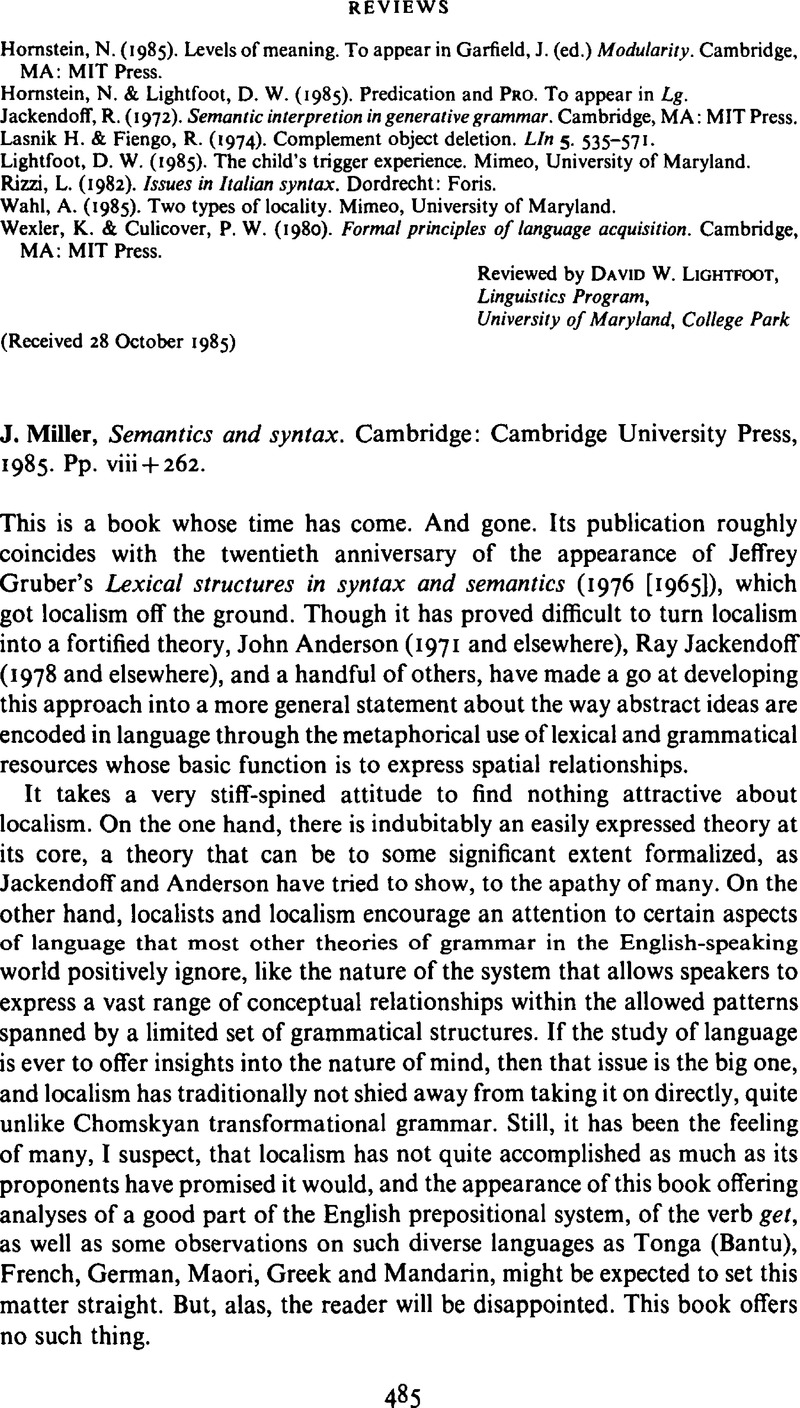No CrossRef data available.
Article contents
J. Miller, Semantics and syntax. Cambridge: Cambridge University Press, 1985. Pp. viii + 262.
Review products
J. Miller, Semantics and syntax. Cambridge: Cambridge University Press, 1985. Pp. viii + 262.
Published online by Cambridge University Press: 28 November 2008
Abstract
An abstract is not available for this content so a preview has been provided. Please use the Get access link above for information on how to access this content.

- Type
- Reviews
- Information
- Copyright
- Copyright © Cambridge University Press 1986
References
REFERENCES
Gruber, J. (1976). [1965]. Lexical structures in syntax and semantics. New York: North Holland.Google Scholar
Jackendoff, R. (1973). The base rules for prepositional phrases. In Anderson, S. R. & Kiparsky, P. (eds.), A Festschrift for Morris Halle. New York: Holt, Rinehart and Winston. 345–356.Google Scholar
Jackendoff, R. (1978). Grammar as evidence for conceptual structure. In Halle, et al. (eds.), Linguistic theory and psychological reality. Cambridge, Mass.: MIT Press. 201–228.Google Scholar
Lindner, S. (1983). A lexico-semantic analysis of English verb particle constructions with ‘out’ and ‘up’. Bloomington: Indiana University Linguistics Club.Google Scholar
Miller, G. & Johnson-Laird, P. (1976). Language and perception. Cambridge, Mass.: Harvard University Press, Belknap Press.CrossRefGoogle Scholar
Zribi-Hertz, A. (1984). Orphan prepositions in French and the concept of ‘null pronoun’. Bloomington: Indiana University Linguistics Club.Google Scholar


